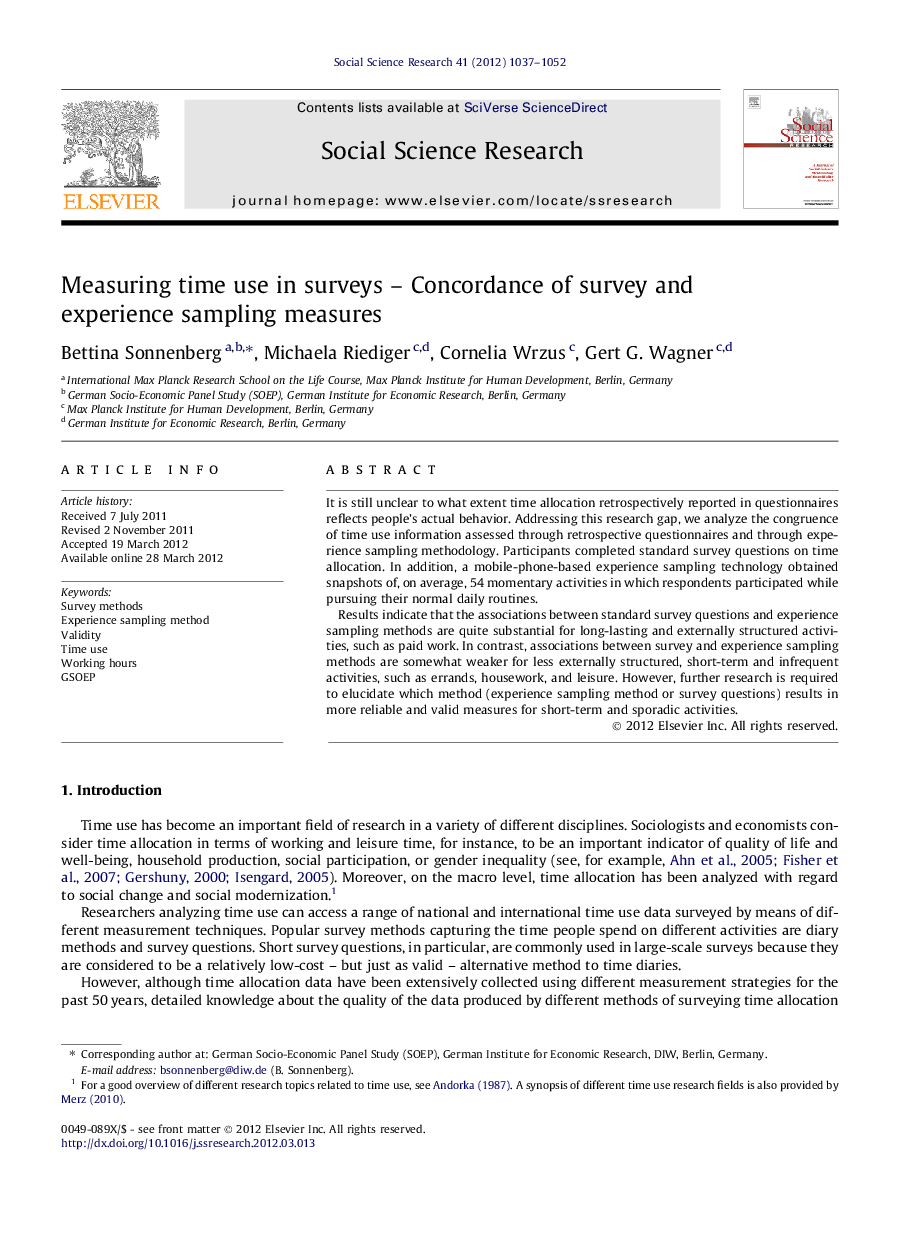| Article ID | Journal | Published Year | Pages | File Type |
|---|---|---|---|---|
| 955933 | Social Science Research | 2012 | 16 Pages |
It is still unclear to what extent time allocation retrospectively reported in questionnaires reflects people’s actual behavior. Addressing this research gap, we analyze the congruence of time use information assessed through retrospective questionnaires and through experience sampling methodology. Participants completed standard survey questions on time allocation. In addition, a mobile-phone-based experience sampling technology obtained snapshots of, on average, 54 momentary activities in which respondents participated while pursuing their normal daily routines.Results indicate that the associations between standard survey questions and experience sampling methods are quite substantial for long-lasting and externally structured activities, such as paid work. In contrast, associations between survey and experience sampling methods are somewhat weaker for less externally structured, short-term and infrequent activities, such as errands, housework, and leisure. However, further research is required to elucidate which method (experience sampling method or survey questions) results in more reliable and valid measures for short-term and sporadic activities.
► We compare people’s time allocation assessed through different survey techniques. ► Time use was obtained by using survey questions and experience sampling methods. ► Association between both measures depends on the characteristics of activities. ► Standard survey questions measure activities with a long duration satisfactorily. ► Short-term and infrequent activities might be distorted using survey questions.
